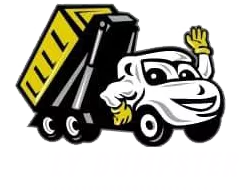![[removal.ai]_b66a6994-4bd6-40fd-afa1-2b3d008c5455-jennifer removalai ba bd fd afa bdc jennifer | Daily Dumpster](http://dailydumpster.net/wp-content/swift-ai/images/wp-content/uploads/removal.ai_b66a6994-4bd6-40fd-afa1-2b3d008c5455-jennifer-png.webp)

Renting a dumpster for heavy materials might seem straightforward until you’re hit with unexpected overage fees or told your bin can’t be hauled because it’s too heavy. These mistakes are more common than you’d think, and they can quickly turn a simple project into an expensive headache.
Whether you’re working on a renovation, roofing job, or demolition, it’s critical to understand your dumpster weight limit before you book. Overfilling, mixing dense materials, or choosing the wrong size can result in delays, safety issues, and added costs that are easy to avoid with a little planning.
In this post, we’ll break down the top 5 mistakes people make when renting a dumpster for heavy materials — and more importantly, how to avoid them. From misjudging debris weight to misunderstanding bin capacity, we’ll show you how to stay compliant and on budget.
At Daily Dumpster, we help customers skip the guesswork with transparent weight limits, clear size guides, and free calculator tools. Because no one wants to pay more than they have to, especially for something as simple as getting rid of debris.
Mistake #1: Ignoring the Dumpster Weight Limit
One of the biggest misconceptions in dumpster rentals is assuming volume equals capacity. But dumpsters aren’t just limited by how much you can fit inside — they’re also restricted by weight.
A dumpster may look half full and still be over the legal weight limit, especially when filled with dense debris like concrete, brick, or wet roofing materials. For example, you might ask, “How much weight can a 20-yard dumpster hold?” — the typical answer is around 3 tons (6,000 lbs), but it varies based on local hauling regulations and material type.
Ignoring the dumpster weight limit is the fastest way to rack up overage fees. Always check weight limits before booking, and if you’re unsure, visit our Dumpster Sizes page or give us a call.
Mistake #2: Mixing Heavy and Light Debris
When you’re in cleanup mode, it’s tempting to toss everything in together, but mixing heavy debris like shingles, stone, or concrete with lighter materials (wood, insulation, cardboard) creates a major problem: unpredictability.
You may stay within your volume limit, but your weight could spike fast, leading to overage fees or even the need for a second dumpster. We see this most often in roofing and renovation projects, where customers underestimate how dense their debris really is.
If you’re taking on a heavy debris dumpster rental, try to keep materials separated by type. Not sure how to do that efficiently? Contact us for tips — we’re happy to help plan your load.
Mistake #3: Underestimating How Much You’re Throwing Away

Another common misstep: focusing only on space instead of weight. When customers ask, “How much can you put in a dumpster?”, they’re usually thinking in terms of volume — but density is just as important.
For instance:
- 1 cubic yard of drywall ≈ 500–700 lbs
- 1 cubic yard of concrete ≈ 4,000 lbs
- A 10-yard dumpster full of mixed junk ≈ 1.5–2 tons
That’s why we recommend using our free calculator tools to estimate your debris weight ahead of time. It takes just a minute and can save you hundreds in fees — or worse, a mid-project dumpster swap.
Mistake #4: Overfilling Past the Fill Line
Even if your debris is under the weight limit, overfilling your dumpster can still lead to serious issues. If debris sticks up past the top edge, especially with loose or bulky items, it may be rejected for pickup due to safety concerns.
An overloaded dumpster creates risk for the hauler, other drivers, and your property. It can also delay your project and result in extra charges for return trips or manual adjustments.
Stick to the marked fill line, and make sure heavier materials are loaded evenly across the bottom. Need a visual on how full each size should be? Check out our Dumpster Sizes guide.
Mistake #5: Choosing the Wrong Dumpster Size for Heavy Materials

Trying to save money by going with a smaller dumpster often backfires when it comes to heavy debris. While a 10-yard dumpster might seem like a deal upfront, it fills up fast, and can exceed its weight limit long before it’s full.
When you’re disposing of dense materials like concrete, slate, or multiple roofing layers, it’s usually smarter (and cheaper) to size up. A 20-yard bin gives you more breathing room for weight and volume, and helps you avoid paying for two trips.
Many mistakes when renting a dumpster come down to underestimating how quickly weight adds up. If you’re dealing with heavy debris, don’t guess — let us help you choose the right size from the start.
Wrap-Up: Avoiding the Expensive Mistakes
Renting a dumpster for heavy materials doesn’t have to be complicated, but avoiding costly mistakes means knowing what to watch for. Here’s a quick recap of the top 5 pitfalls:
- Ignoring weight limits and focusing only on volume
- Mixing heavy and light debris, creating unpredictable loads
- Underestimating how much you’re tossing, especially with dense materials
- Overfilling past the fill line, risking pickup rejections
- Choosing the wrong dumpster size for heavy debris
At Daily Dumpster, we help you sidestep every one of these with clear guidance, free calculator tools, transparent weight limits, and fast, friendly advice from real humans.
Got questions about heavy materials? Call or text us — or use our calculator tools to book with confidence. We’re here to help you get it right the first time.
